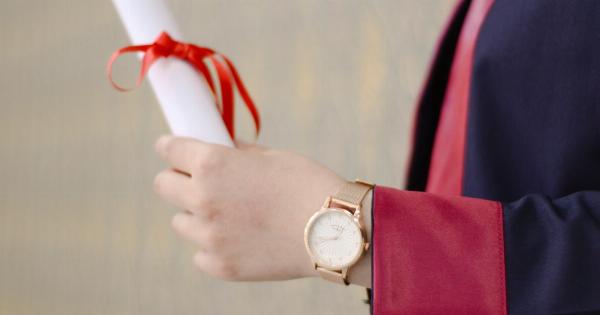Appearances have long been a topic of fascination and debate. It is often said that “looks can be deceiving,” implying that one should not judge a book by its cover.
However, in our society, appearances hold substantial significance in shaping our initial perceptions of individuals. Whether we like it or not, the way we present ourselves visually has a profound impact on how others perceive our character.
The Power of First Impressions
First impressions are formed within seconds, and often, they heavily rely on appearances. When we meet someone new, our brains instinctively make snap judgments based on their external attributes.
It is as if our minds are hardwired to quickly assess the potential threat or compatibility of the person in front of us.
Think about a job interview scenario where two candidates with similar qualifications are competing for the same position.
Both individuals possess the necessary skills and knowledge, but one is sharply dressed, well-groomed, and exudes confidence, while the other appears disheveled and lacks poise. The interviewer’s initial perception of these candidates can significantly affect the outcome of the selection process, despite both candidates having equal potential.
Furthermore, appearances often influence the way others treat us. People who are considered attractive or well put-together are more likely to be received positively and may find it easier to build relationships or gain opportunities.
This preference for attractive appearances extends beyond personal interactions and into various aspects of life, such as business and social settings.
The Halo Effect
The “Halo Effect” is a psychological phenomenon that further illustrates the impact appearances have on our perception of someone’s character.
Coined by psychologist Edward Thorndike in 1920, the Halo Effect describes the tendency for individuals to assume that those who possess one positive attribute are also likely to possess other positive attributes as well.
For example, if we encounter someone who is physically attractive, we are more likely to perceive them as kind, intelligent, and successful, despite having no concrete evidence to support these assumptions.
Conversely, if a person does not conform to societal beauty standards, they may face unfair judgment or be unfairly labeled as less competent or less trustworthy.
This phenomenon can lead to unfair treatment and biased opinions, as we may overlook a person’s actual character or skills solely based on their appearance.
The Halo Effect demonstrates how appearances can cloud our judgment and potentially hinder our ability to accurately assess others.
Appearances versus Reality
While appearances can provide initial insights into someone’s character, they rarely give us a complete or accurate picture.
People have different ways of presenting themselves, and factors such as cultural background, personal style, and socio-economic status can greatly influence how individuals choose to appear. It is crucial to remember that appearances are merely the surface; they do not reflect someone’s values, beliefs, or true character.
Consider the example of a person who dresses casually and has a nonchalant demeanor. They may be mistakenly viewed as lazy or unmotivated when, in reality, they are highly competent, hardworking, and dedicated to their craft.
On the other hand, an individual who is impeccably groomed and dresses impeccably may give off an air of sophistication and success, but behind closed doors, they may be struggling or plagued by personal challenges.
Appearances often serve as a mask, hiding genuine emotions, experiences, and complexities of individuals. This reinforces the notion that relying solely on appearances to determine someone’s character is a flawed approach.
The Importance of Non-Visual Cues
Even though appearances can create lasting impressions, it is vital to consider non-visual cues in order to form a more accurate judgment about someone’s character.
Non-verbal communication, body language, and conversation skills provide valuable insights into a person’s personality, ethics, and values.
Actively listening to someone, offering genuine empathy, and observing how they treat others can provide a more holistic understanding of their character.
These non-visual cues reflect someone’s interpersonal skills, emotional intelligence, and moral compass, all of which are critical aspects of someone’s true character.
Wearing a well-tailored suit or an elegant dress may create an initial impression of professionalism or refinement, but those external traits do not necessarily translate into someone’s behavior, integrity, or ability to build meaningful connections.
The Danger of Stereotyping
One of the most significant dangers of judging someone’s character based on appearances is the perpetuation of stereotypes.
Stereotypes are generalizations and assumptions made about individuals or groups based on their external attributes or societal labels. Judging individuals solely on their appearances can contribute to unfair discrimination, prejudice, and social division.
Consider how someone’s race, gender, or body size may unconsciously influence our perception of their character.
These superficial judgments can reinforce harmful stereotypes and impede meaningful connections between individuals from different backgrounds.
It is important to challenge our own biases and actively seek to understand and appreciate the diversity and complexity of individuals beyond their appearances.
By doing so, we can foster a more inclusive and accepting society that values character over superficial characteristics.
The Impact of Personal Growth and Development
Appearances can change over time, whereas someone’s character is more enduring. Personal growth and development play significant roles in shaping individual character, and these internal changes often do not reflect outwardly.
Someone’s appearance today may not accurately represent the person they were yesterday or the person they aspire to be in the future.
People evolve, learn from their experiences, and modify their behavior. Someone who may have made poor choices in the past can embark on a journey of self-improvement, transforming their character along the way.
When we judge solely on appearances, we risk overlooking someone’s potential for growth, redemption, and positive change.
The Balance between Appearances and Character
While appearances can provide some initial insights into someone’s persona, it is crucial to strike a balance between the significance we attribute to appearances and the importance we give to character.
By being mindful of our biases and focusing on non-visual cues, we can gain a more accurate and nuanced understanding of the people around us.
We must train ourselves to look beyond the surface and choose not to judge someone solely based on their appearances.
Engaging in meaningful conversations, practicing empathy, and valuing diversity can help break down barriers created by appearance-based judgments. By doing so, we allow ourselves to connect with people on a deeper level, fostering genuine understanding and appreciation.
Remember, appearances can be deceiving, but true character shines through actions, values, and interpersonal connections.































